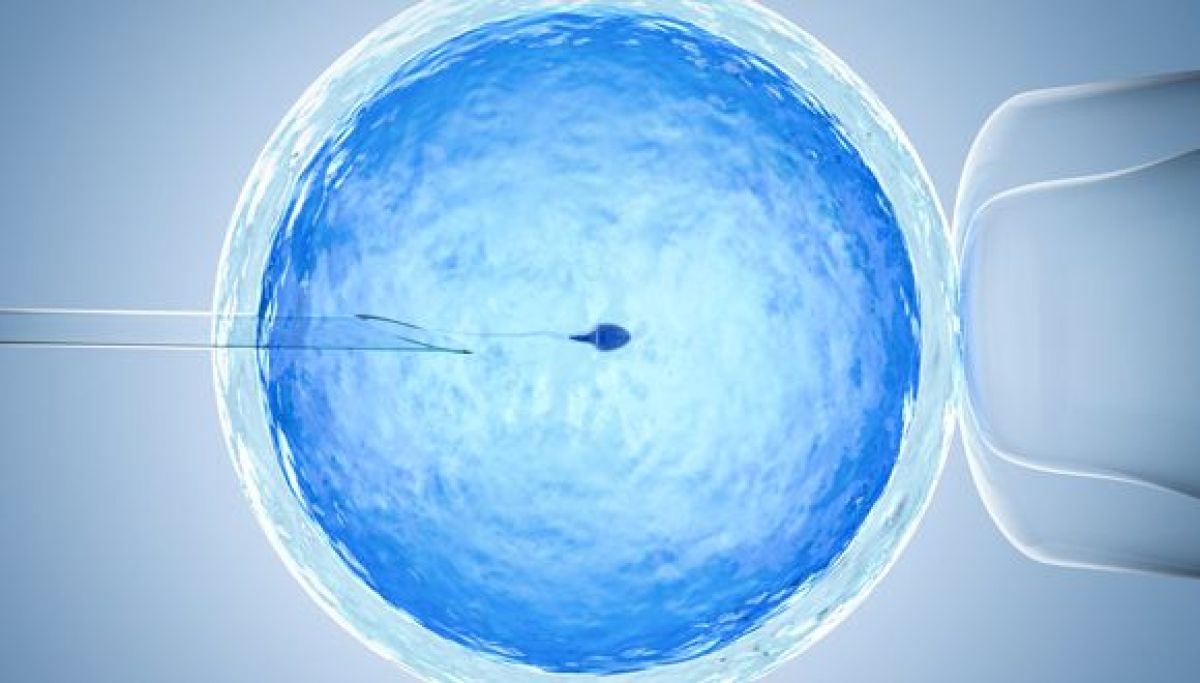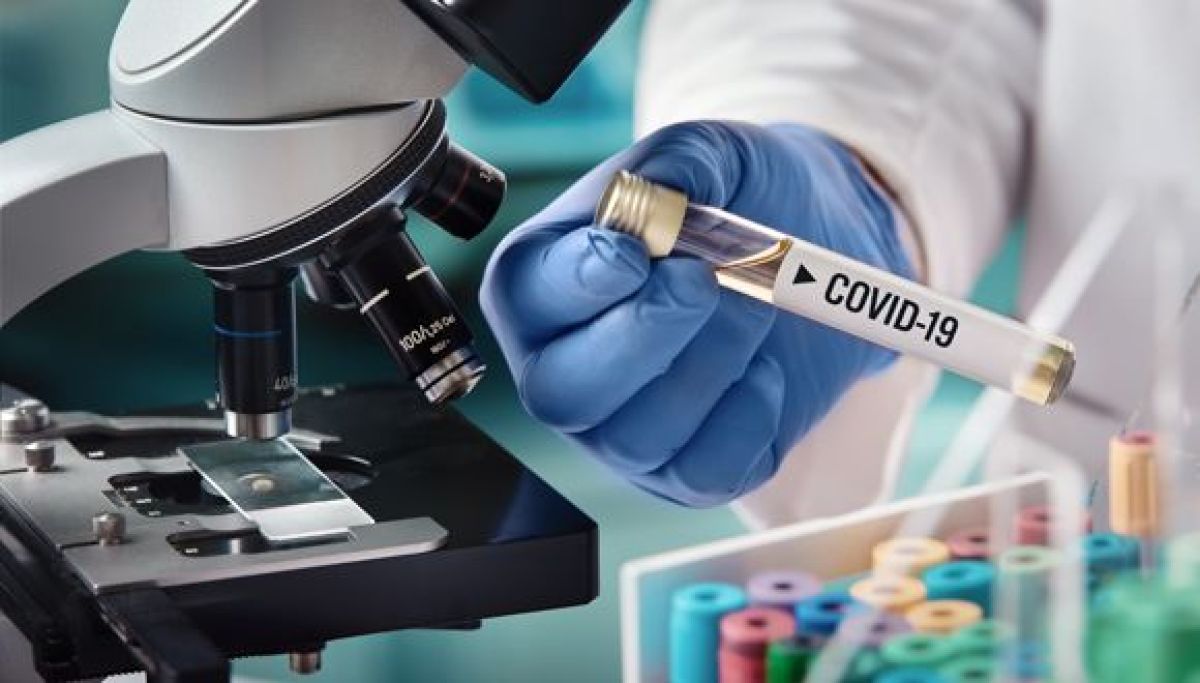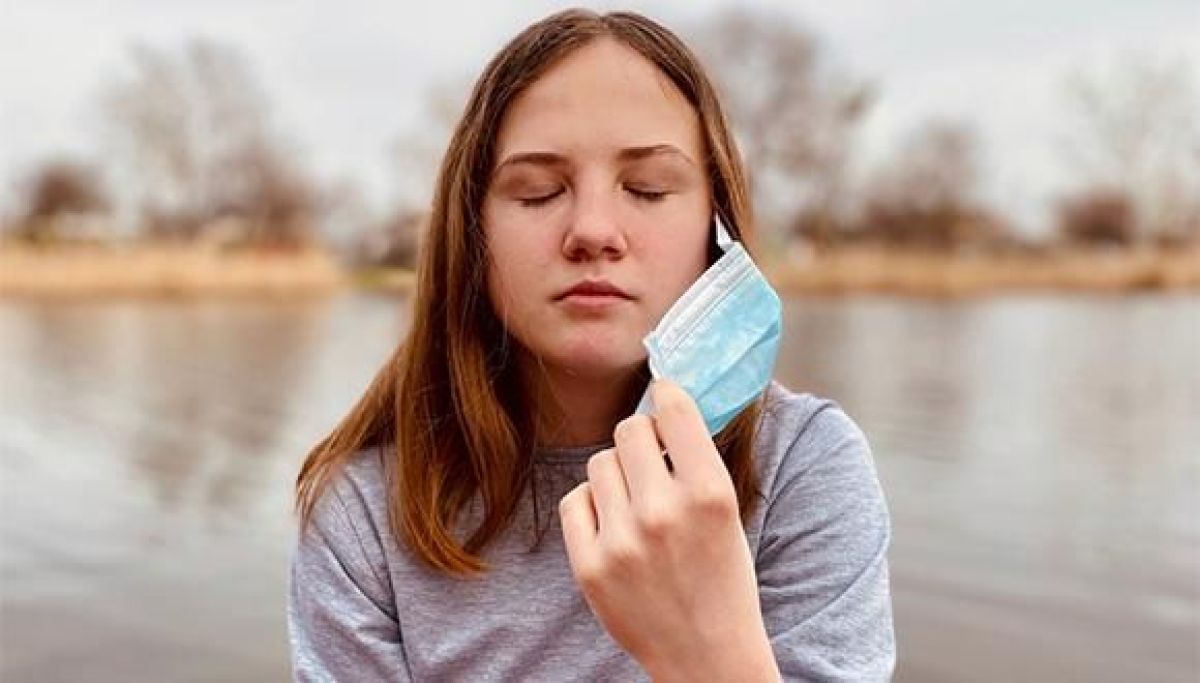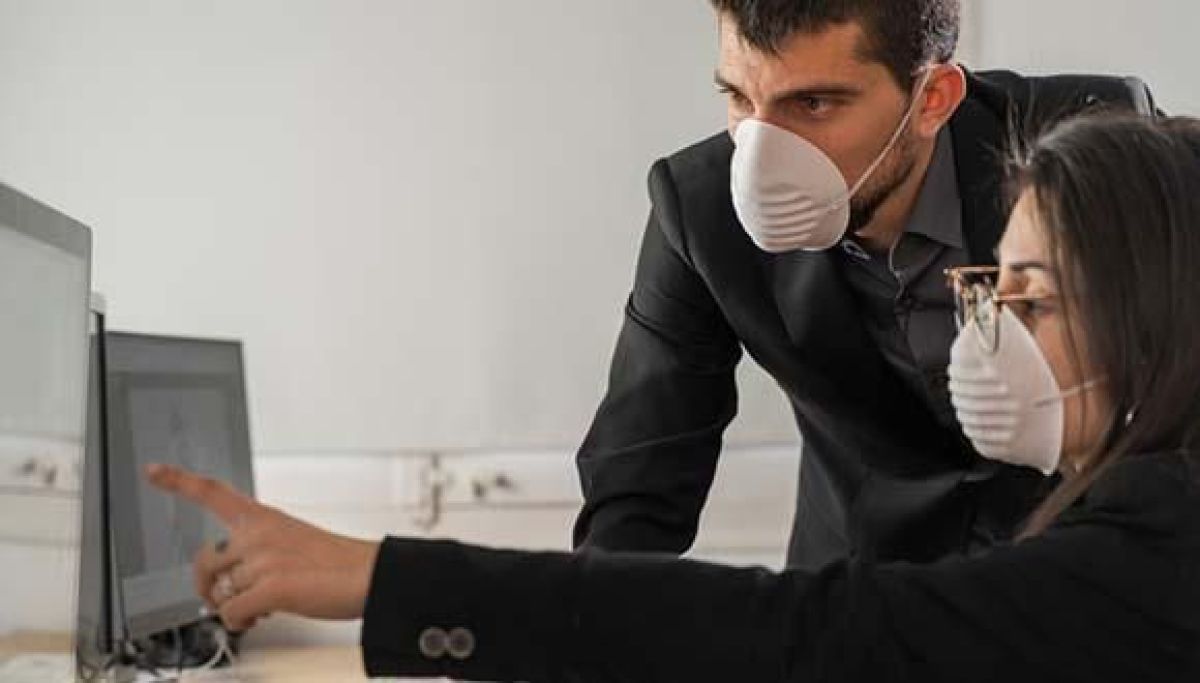Zooming in and out of class
We asked TAU professors about the benefits and challenges of remote teaching, and what they plan to take with them into the post-pandemic world
Due to the coronavirus, Tel Aviv University, like many universities across the globe, has moved its classes to an online format. But can you really copy-paste a class into Zoom and expert the same experience for students? How are professors coping with the challenges of students who are sitting at home, amid a million distractions? We talked to different professors from across campus to find out.
The unexpected benefits of a crisis
Dr. Jonathan Ostrometzky teaches at the “Sciences for High Tech” program. He’s currently teaching two courses over Zoom, both for advanced B.Sc students.
According to him, remote teaching has brought unexpected advantages. “In “Introduction to Hardware”, the larger class I teach, I’ve been recording myself giving the lecture, with the presentation and all the details, and then sending students the video, even as far as a week in advance,” says Dr. Ostrometzky.
Doesn’t that make the class over Zoom unnecessary? “Not at all,” he says. “Some of the students watch the lecture in advance, though not all of them. The material is packed with details and it really helps students to be able to review things before the live lecture. It also means the questions I get, the discussion we can have, goes much deeper.”
More time for more questions
Dr. Asia Ben Cohen and Dr. Gideon Segev teach a large intro course at the Iby and Aladar Fleischman Faculty of Engineering together, to about 250 students. “The first week,” Dr. Segev says, “Dr. Ben Cohen taught classes while I was already in isolation because of COVID-19.”
Like Dr. Ostrometzky, they’ve also found that moving to Zoom has given their lectures room to breathe. “The course is one of the “heaviest” in terms of the material, of the entire Bachelor’s program. In class, we usually go pretty slowly, students need time to process and take everything in. It’s very difficult to convey the material purely through presentations, we write on the board a lot, and it helps students follow along.”

Can you learn “heavy” engineering material over Zoom?
Without a board the whole classroom was focused on at the same time, and with the difficulty of keeping students engaged when they were just muted, black boxes on the screen, the lecturers decided to flip the script.
“We divided the work between us,” says Dr. Segev. “Dr. Ben Cohen recorded herself giving the lectures the way we would do them in class, writing out equations and explaining everything as she went, and those were sent to students, so they could review them at home. Then, for my lecture time, I opened Zoom and invited everyone to come and ask questions, have a discussion with me, get help about anything they found unclear.”
Did it work? “About a month after we began online teaching, we sent our students a survey to see how they were doing, and got some really positive feedback. People were happy that they could review material, pause, repeat, and then ask me their questions live on Zoom.”
Saving the environment through Zoom
Prof. Hadas Mamane, who teaches the class “Water Purifying Technologies” to Master’s students, finds remote learning has its upsides. “I can see questions students have over chat,” Prof. Manage says. “Share different screens with them, do a poll in the middle of the class to check whether they’ve understood the material. It’s also easier to bring on guest lecturers and expose the students to broader perspectives, and it allows flexibility for students who study and work at the same time.”

Is Zoom better for the environment?
There’s also one major advantage to remote learning that Prof. Mamane sees as especially relevant for her work. “As someone who cares deeply about the environment, I see a huge benefit in the fact that my students and I don’t have to waste fuel or resources to attend a class. We, as a society and a university, have to keep our eyes on the environmental crisis, and remote learning allows us to cut back on harmful emissions.”
The challenge of engagement
But of course, there are some challenges that come with remote teaching as well. “It’s harder to tell whether students are really engaged,” says Dr. Ostrometzky. “I sometimes pause the class and ask them a question, just to see who’s listening and get some kind of feedback.”

Is anyone out there? Telling whether students are engaged can be tough.
Dr. Gal Raz, who teaches two advanced film classes at the David and Yolanda Katz Faculty of the Arts, agrees. “I teach two 4-hour classes in one day, and it’s not easy sitting in front of a screen for eight hours and feeling a bit like I’m talking to myself. The lack of eye contact isn’t very pleasant. It’s also not easy for my three children to stay quiet for that long.”
Maya Dreifuss, a director who teaches film directing and screenwriting, finds the classroom atmosphere is also difficult to replicate. “Things happen when people are in the same space together, students barge into each other’s words, talk at the same time, even when these interactions are a little disruptive they still contribute to a vibrant energy and class atmosphere.”
What happens after the pandemic?
The professors we spoke to were divided in how much of the online learning experience can be taken back into the classroom, once we eventually return to normal life.
“Everyone should be able to study in the way that works best for them,” says Dr. Ostrometzky. “I plan to keep the videos for every future iteration of the class, so students can review them whenever they want. It only enhances the classroom experience.”

What happens when we all go back to our regular classrooms?
Dr. Mamane agrees. “I feel like I’ve gone through a huge change and I don’t want to go back to how things were. I want to meet students face-to-face but also use Zoom for flexibility and things like guest lectures.”
Dr. Raz and Maya Dreifuss see things differently, both agreeing that not much of remote learning can be taken back into post-pandemic life. “Zoom can be good for one-on-one meetings with students,” Dr. Raz says. “But nothing can replace the classroom atmosphere.”
Maybe the difference of opinion can be attributed to the fact that in the arts, the classroom discussion generally carries a greater weight than in the exact sciences? Regardless, all the professors we spoke to felt remote learning has changed their perspective in some way, and has given them a new experience of teaching. Hopefully, when we all return to our classes, this new perspective will lead to even better teaching and greater academic insights.
Dead Sea Scrolls “puzzle” solved with DNA from ancient animal skins
Ancient DNA extracted from Dead Sea Scrolls by Tel Aviv University researchers permits rare, unanticipated glimpse into world of Second Temple Judaism
A puzzle with thousands of pieces
Researchers have long been puzzled as to the degree this collection of manuscripts, a veritable library from the Qumran caves, reflects the broad cultural milieu of Second Temple Judaism, or whether it should be regarded as the work of a radical sect (identified by most as the Essenes) discovered by chance. “Imagine that Israel is destroyed to the ground, and only one library survives — the library of an isolated, ‘extremist’ sect: What could we deduce, if anything, from this library about greater Israel?” Prof. Rechavi says. “To distinguish between scrolls particular to this sect and other scrolls reflecting a more widespread distribution, we sequenced ancient DNA extracted from the animal skins on which some of the manuscripts were inscribed. But sequencing, decoding and comparing 2,000-year old genomes is very challenging, especially since the manuscripts are extremely fragmented and only minimal samples could be obtained.” Pnina Shor, founder of the Dead Sea Scrolls Unit at the Israel Antiquities Authority, adds, “The Israel Antiquities Authority is in charge of both preserving the scrolls for posterity and making them accessible to the public and to scholars. Recent scientific and technological advances enable us to minimize physical intervention on the scrolls, thus facilitating multidisciplinary collaborations.” New methods for solving ancient mysteries To tackle their daunting task, the researchers developed sophisticated methods to deduce information from tiny amounts of ancient DNA, carefully filtering out potential contaminations and statistically validating the findings. The team employed these mechanisms to deal with the challenge posed by the fact that genomes of individual animals of the same species (for instance, two sheep of the same herd) are almost identical to one another, and even genomes of different species (such as sheep and goats) are very similar. For the purpose of the research, the Dead Sea Scrolls Unit of the Israel Antiquities Authority supplied samples — sometimes only scroll “dust” carefully removed from the uninscribed back of the fragments — and sent them for analysis by Prof. Rechavi’s team: Dr. Sarit Anava, Moran Neuhof, Dr. Hila Gingold and Or Sagi. To prevent DNA contamination, Dr. Anava traveled to Sweden to extract the DNA under the meticulous conditions required for ancient DNA analysis (e.g. wearing special full-body suits) in Prof. Jakobsson’s paleogenomics lab in Uppsala, which is equipped with cutting-edge equipment. In parallel to the teams that were studying the animals’ ancient DNA, Prof. Mason’s metagenomics lab in New York studied the scrolls’ microbial contaminants. Prof. Jakobsson says, “It is remarkable that we were able to retrieve enough authentic ancient DNA from some of these 2,000 year old fragments considering the tough history of the animal hides. They were processed into parchment, used in a rough environment, left for two millennia, and then finally handled by humans again when they were rediscovered.”Textual pluralism opens window into culture of Second Temple Jewish society
According to Prof. Rechavi, one of the most significant findings was the identification of two very distinct Jeremiah fragments. “Almost all the scrolls we sampled were found to be made of sheepskin, so most of the effort was invested in the very challenging task of trying to piece together fragments made from the skin of particular sheep, and to separate these from fragments written on skins of different sheep that also share an almost identical genome,” says Prof. Rechavi. “However, two samples were discovered to be made of cowhide, and these happen to belong to two different fragments taken from the Book of Jeremiah. In the past, one of the cow skin-made fragments was thought to belong to the same scroll as another fragment that we found to be made of sheepskin. The mismatch now officially disproves this theory.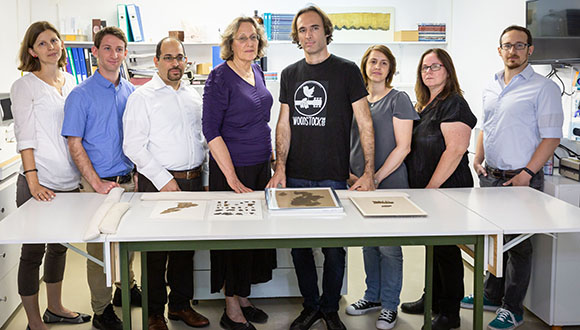
“What’s more, cow husbandry requires grass and water, so it is very likely that cow hide was not processed in the desert but was brought to the Qumran caves from another place. This finding bears crucial significance, because the cowhide fragments came from two different copies of the Book of Jeremiah, reflecting different versions of the book, which stray from the biblical text as we know it today.”
Prof. Mizrahi further explains, “Since late antiquity, there has been almost complete uniformity of the biblical text. A Torah scroll in a synagogue in Kiev would be virtually identical to one in Sydney, down to the letter. By contrast, in Qumran we find in the very same cave different versions of the same book. But, in each case, one must ask: Is the textual ‘pluriformity,’ as we call it, yet another peculiar characteristic of the sectarian group whose writings were found in the Qumran caves? Or does it reflect a broader feature, shared by the rest of Jewish society of the period? The ancient DNA proves that two copies of Jeremiah, textually different from each other, were brought from outside the Judean Desert. This fact suggests that the concept of scriptural authority — emanating from the perception of biblical texts as a record of the Divine Word — was different in this period from that which dominated after the destruction of the Second Temple. In the formative age of classical Judaism and nascent Christianity, the polemic between Jewish sects and movements was focused on the ‘correct’ interpretation of the text, not its wording or exact linguistic form.”
“What’s more, cow husbandry requires grass and water, so it is very likely that cow hide was not processed in the desert but was brought to the Qumran caves from another place. This finding bears crucial significance, because the cowhide fragments came from two different copies of the Book of Jeremiah, reflecting different versions of the book, which stray from the biblical text as we know it today.”
Prof. Mizrahi further explains, “Since late antiquity, there has been almost complete uniformity of the biblical text. A Torah scroll in a synagogue in Kiev would be virtually identical to one in Sydney, down to the letter. By contrast, in Qumran we find in the very same cave different versions of the same book. But, in each case, one must ask: Is the textual ‘pluriformity,’ as we call it, yet another peculiar characteristic of the sectarian group whose writings were found in the Qumran caves? Or does it reflect a broader feature, shared by the rest of Jewish society of the period? The ancient DNA proves that two copies of Jeremiah, textually different from each other, were brought from outside the Judean Desert. This fact suggests that the concept of scriptural authority — emanating from the perception of biblical texts as a record of the Divine Word — was different in this period from that which dominated after the destruction of the Second Temple. In the formative age of classical Judaism and nascent Christianity, the polemic between Jewish sects and movements was focused on the ‘correct’ interpretation of the text, not its wording or exact linguistic form.”
Study finds ancient Canaanites genetically linked to modern populations
Today’s Jews and Arabs in Israel, Jordan and Lebanon get half their ancestry from Bronze Age Levantines
Most of today’s Jewish and Arabic-speaking populations share a strong genetic link to the ancient Canaanites, according to a new study conducted by an international team of archaeologists and geneticists, including TAU’s Prof. Israel Finkelstein from the Department of Archaeology and Ancient Near Eastern Cultures. The study concludes that modern-day groups in Lebanon, Israel and Jordan share a large part of their ancestry, in most cases more than half, with the people who lived in the Levant during the Bronze Age, more than 3,000 years ago. The researchers also determined that the Canaanites – who frequently appear in ancient sources, including the Bible – descended from a mixture of an earlier Levantine population and migrants coming from the Caucasus region or modern-day Iran. Tale of bones The researchers analyzed genetic material from dozens of skeletons found at Canaanite sites across Israel and neighbouring countries, and compared it to the genomes of other ancient populations as well as to modern-day groups. “This study suggests there is a deep genetic connection of many Jewish groups today across the Diaspora and many Arab groups to this part of the world thousands of years ago,” said Prof. Reich, a Harvard University geneticist and one of the world’s top experts in the study of ancient DNA, speaking to Haaretz. Invasion or migration? Experts know the ancient Canaanites were divided into independent city states, such as Megiddo, Hazor, and Acre. Most of the texts about them come from outsiders or later sources, so did the “Canaanite people” really exist as a coherent entity? The new study shows that genetically at least, the Canaanites did have a lot in common with each other. Most of the recovered genomes could be modelled as having a roughly 50/50 contribution of ancestry from local Neolithic inhabitants and from a group that hailed from the Caucasus or the Northwestern Zagros mountains, in today’s Iran. For the ancestry of the Canaanites to be split halfway between locals and newcomers there would have had to be an influx of a significant number of people; and a question that begs to be asked is whether this inflow was an invasion or a peaceful migration. “I don’t think we are dealing with an invasion,” Prof. Finkelstein said. “We have no archaeological evidence of destruction or a major disruption in the Early Bronze Age.” The next step for researchers will be to continue modelling the ancient populations of the Levant, especially after the time of the Canaanites. According to Prof. Finkelstein: “It will be interesting to see what happened afterwards, what was the genetic profile of the people of biblical Israel and Judah, how do they connect to us and to their predecessors, and what were the other contributions to the genetic pool along the way.”Did climate change cause infections 6,000 years ago?
New study of human skulls finds infections peaked due to high population density, poor hygiene and climate conditions
A story in the skulls
Until the advent of antibiotics in the 20th century, ear infections developed into chronic conditions, or, due to complications, caused permanent loss of hearing or even death. “Ear infections are still a very common childhood ailment, with over 50 percent of young children today still suffering from an ear infection at one point or another,” explains Dr. May. “The reason for this is that the tubes that channel fluid from the middle ear to the mouth are underdeveloped in young children, so fluids that accumulate in the ear ultimately cause inflammation.” “A prolonged ear infection would cause permanent damage to the bony wall of the middle ear, which is remarkably preserved into adulthood, so when we sought to investigate changes in communal health over time in our region, we chose to focus on ear infections, developing a special method for doing so,” she adds. The scientists used a videoscope, a tiny camera mounted at the end of a flexible tube, which they inserted through the ear canal to the middle ear to observe its bony walls. In addition, they scanned skull remains with a high-resolution micro-CT, and also examined the middle ear’s bony wall using a light microscope.More room, fewer infections
As living conditions improved, morbidity as a result of ear infections dropped, according to the study. “Houses were larger and featured several rooms, including separate areas for specific activities, i.e. the kitchen was set up in a separate room or outside, and livestock were kept in a separate area,” she says. “The change in lifestyle and climate is reflected in a decline in morbidity.” “Our study deals with the impact of the environment and social behavior on morbidity rates, and to do so, we examined a common disease that has accompanied humanity since inception – the ear infection,” concludes Dr. May. “Understanding how diseases appear, spread and disappear throughout human history can help prevent and find solutions to contemporary illnesses. The study clearly points out risk factors and shows how lifestyle changes can affect the incidence of the disease. In both ear infections and COVID-19, social distancing and adherence to hygiene reduced the spread of infection, while close quarters and unhygienic living conditions saw infections spike.”New TAU study tracks coronavirus spread patterns in Israel
Research finds approximately 70% of the infections in Israel were caused by a SARS-CoV2 strain imported from the United States
The origins of coronavirus
“The novel coronavirus is characterized by mutations that occur at a set pace,” explains Dr. Stern. “These mutations do not affect the virus, i.e. it remains stable, but these mutations can help us trace the chain of infection from country to country. After the pandemic broke out in Wuhan, for example, one or two mutations occurred, and one virus with a mutation may have migrated to Europe where it experienced additional mutations, and from there it traveled to the United States, and so on. “We can look at these mutations as a kind of barcode that helps us keep track of the progression and transformation of the coronavirus as it moves from country to country.” To obtain a clear picture of the origin of infection in Israel, the researchers compared the genomic sequences of local patients to some 4,700 genomic sequences taken from patients around the world. They found that more than 70% of the patients had been infected by a coronavirus strain that originated in the U.S. The remaining nearly 30% of infections were imported from Europe and elsewhere: Belgium (8%), France (6%), England (5%), Spain (3%), Italy (2%), the Philippines (2%), Australia (2%) and Russia (2%). According to Dr. Stern, the new genomic map provides insight into the precise spread of the novel coronavirus within Israel. Until now, any assessment of the spread of infection relied on such subjective parameters as patient feedback. The new research will be able to expose the rate of infection in a household, in an apartment building, in a school, in a neighborhood, and more. It will also provide early detection of super spreaders – people who travel far and wide and infect a large number of people – and could even identify major events with the potential to trigger widespread infection.The importance of 10%
“Going forward, the data obtained from genomic sequencing will serve as an important basis for informed decisions about which institutions to close, for what amount of time, and in which format,” says Dr. Stern. With policymakers in mind, the researchers developed a complex statistical model based on genomic sequencing that estimates the epidemiological parameters of viral spread. The model shows that the rate of infection decreased significantly following strict quarantine measures taken in Israel and highlights a major discrepancy between the number of people each coronavirus patient infected. The model also estimates that over 80% of coronavirus cases in Israel were the direct result of only 10% of the coronavirus patients in Israel, meaning that these 10% were, in fact, super-spreaders. According to the model and to the genomic sequencing, Dr. Stern says that no more than 1% of the population in Israel contracted the virus – a far cry from herd immunity. “In our study, we performed the first massive genomic sequencing of the coronavirus in Israel,” she concludes. “This technology and the information it provides is of great importance for understanding the virus and its spread in the population, as a scientific and objective basis for local and national decision-making. The data obtained from the research can greatly help policymakers on issues such as closures and quarantines. In doing so, the study makes a significant contribution to dealing with the epidemic in Israel, and, more importantly: We have developed tools that will allow us to cope, in real time, with the next outbreak that may occur.”Accurate 3D imaging could significantly improve IVF treatments
New Tel Aviv University technology allows clinicians to identify and select better-quality sperm, potentially increasing chances of pregnancy
Choosing the right cells to make a baby
Under natural fertilization in the woman’s body, the fastest sperm to reach an egg is supposed to bear high-quality genetic material. Progressive movement allows this “best” sperm to overcome the veritable obstacle course of a woman’s reproductive system. “But this ‘natural selection’ is not available to the embryologist, who selects a sperm and injects it into the egg,” Prof. Shaked says. “Sperm cells not only move fast, they are also mostly transparent under regular light microscopy, and cell staining is not allowed in human IVF. Existing imaging technology that can examine the quality of the sperm’s genetic material may cause embryonic damage, so that too is prohibited. In the absence of more precise criteria, sperm cells are selected primarily according to external characteristics and their motility while swimming in water in a dish, which is very different from the natural environment of a woman’s body. “In our study, we sought to develop an entirely new type of imaging technology that would provide as much information as possible about individual sperm cells, does not require cell staining to enhance contrast, and has the potential for enabling the selection of optimal sperm in fertilization treatments.”A hologram of sperm cells
The researchers chose light computed tomography (CT) technology for the unique task of sperm cell imaging. “In a standard medical CT scan, the device rotates around the subject and sends out X-rays that produce multiple projections, ultimately creating a 3D image of the body,” says Prof. Shaked. “In the case of the sperm, instead of rotating the device around this tiny subject, we relied on a natural feature of the sperm itself: Its head is constantly rotating during the forward movement. We used weak light (and not X-rays), which does not damage the cell. We recorded a hologram of the sperm cell during ultrafast movement and identified various internal components according to their refractive index. This creates an accurate, highly dynamic 3D map of its contents without using cell staining.” Using this technique, the researchers obtained a clear and accurate CT image of the sperm at very high resolution in four dimensions: three dimensions in the space at resolution of less than half a micron (one micron equals one millionth of a meter) and the exact time (motion) dimension of the second sub-millisecond. “Our new development provides a comprehensive solution to many known problems of sperm imaging,” Prof. Shaked says. “We were able to create high-resolution imaging of the sperm head while it was moving fast, without the need for stains that could harm the embryo. The new technology can greatly improve the selection of sperm cells in vitro, potentially increasing the chance of pregnancy and the birth of a healthy baby. “To help diagnose male fertility problems, we intend to use our new technique to shed light on the relationship between the 3D movement, structure and contents of sperm and its ability to fertilize an egg and produce a viable pregnancy,” Prof. Shaked concludes. “We believe that such imaging capabilities will contribute to other medical applications, such as developing efficient biomimetic micro-robots to carry drugs within the body.”TAU partners with pharma company to develop COVID-19 vaccine
The epitope-based vaccine will target the most vulnerable part of the viral spike protein
Targeting the Achilles’ heel of coronavirus
“The smaller the target and the focus of the attack, the safer and greater the effectiveness of the vaccine,” he adds. “The virus takes far-reaching measures to hide its RBM from the human immune system, but the best way to ‘win the war’ is to develop a vaccine that specifically targets the virus’s RBM.” Keren Primor Cohen, Ramot CEO says: “We hope that through this collaboration with Neovii, it will be possible to produce an effective vaccine that targets the coronavirus’s Achilles’ heel and will accelerate the development of a protective vaccine against this global threat.” Jürgen Pohle, Neovii CEO, adds: “The outbreak of the COVID-19 pandemic has demonstrated how fragile and vulnerable our societies are in the face of a pandemic. We are extremely excited about our collaboration with Professor Gershoni and TAU which provides Neovii with a first-in-class platform for the rapid development of promising vaccine candidates towards any future emerging pandemics including COVID-19. Furthermore, the COVID-19 vaccine is highly synergistic to Neovii’s core expertise in the development and manufacturing of passive polyclonal antibodies and provides an opportunity to bring a COVID-19 immunotherapy in a rapid manner.” Neovii’s long-standing and well-established experience and capabilities in developing, manufacturing and commercializing biopharmaceuticals will support the objective to have a vaccine ready for use in the general population on an accelerated timeline.What about the environment?
In an online seminar, Prof. Colin Price connects the dots between two current disasters: the climate crisis and the coronavirus crisis
The coronavirus pandemic caught us off guard. Without any warning, it transformed our daily routines overnight and caused a global shock, which will take a long time to recover from. The climate crisis, on the other hand, has been a subject of discussion for scientists for many years. Are there any points at which these two threats connect? And will dealing with the immediate threat, the coronavirus, also lead to more ecological and considerate behavior towards the environment? Prof. Colin Price, head of the Porter School of Environmental Studies and Earth Sciences, created an online seminar on the topic and called on heads of state to take advantage of the opportunity we’ve been given to save the world from an irreversible crisis which is about to reach the point of no return.
Immediate sacrifice for a long-term solution
Since the beginning of the coronavirus crisis, we’ve realized in a few weeks how much power nature has, and how it can neutralize human systems. Entire populations and sectors have been shut down and defined as high risk, economies and medical systems have been paralyzed, prosperous industries are suddenly at the brink of collapse, disrupted supply chains and more.
“Everyone understands that we have to act swiftly around the coronavirus, in order to achieve a fair, long-term solution,” says Prof. Price, and immediately points out the similarity to an issue we’ve been dealing with for a long time – the climate crisis. “While the Corona crisis is mostly threatening to humans, the effects of the climate crisis, evident in deadly heat waves, huge fires, floods, storms and sea level rise, are hitting a much wider ‘target audience’. Animals, infrastructure, natural resources – everything is under threat. The main problem is that because the climate crisis is not immediate, like coronavirus, and because it’s not personal – it’s not taken seriously enough, and long-term solutions aren’t being considered.”
Professor Price referred to similar points in both crises, including the weight that must be given to the exponential curve of both, the speed with which we have to react in order to stop the destructive effects in time, and the immediate sacrifice that must be made to gain a better long-term outcome for future generations.
Change will be good for us and the environment
“There is no doubt that when we go back to normal after the coronavirus crisis, everything will be different,” says Prof. Price. “I estimate that thanks to online communication, we will see a decrease in the volume of business trips abroad and, as a result, the demand for oil will decrease. People will work more from home and there will no doubt be companies that adopt this format, and will completely give up paying office fees. There will be greater investment in new infrastructure in health systems, distance learning, local manufacturing and more changes that, if examined in the environmental aspect – are undoubtedly friendly to the natural resources we breathe and consume, which we want to protect.”
“If you ask me what we should learn from the current crisis, it’s first and foremost that we should listen to scientists. From the first day the virus broke out in China, they warned that it was an epidemic that would affect the whole world. So should we listen to the scientists who have been studying the climate crisis. I’ve been working in the field for 30 years and I can say for sure – people don’t listen. World leaders don’t listen.”
“We all need to understand the severity of the exponential curve, and understand the cost of our actions for the global village we live in, both on the coronavirus and climate issues. We have to remember that our actions on one side of the world affect people and the environment on the other.”
Lower the level of vulnerability and increase our resilience
According to Prof. Price, the role of governments is critical in managing the world response to both crises. “To reinvigorate the economy at the end of the Corona crisis, we have the opportunity to encourage funding, job allocation and investment in green technologies, for example in the public transport sector, to make it more efficient, cost-effective and green, to provide a more promising future and prevent the arrival of the next crisis.”
“The risk of a crisis, no matter if it’s an earthquake, fire or deadly virus, depends on three main variables: the threat itself, who is exposed to it and what level of vulnerability there is,” Prof. Price explains. “Once we manage to neutralize one of these variables, our chances of getting hurt are smaller.”
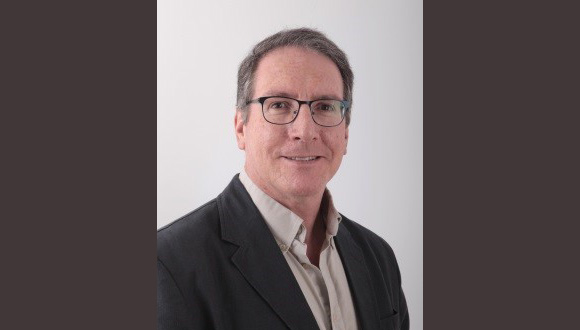
Prof. Colin Price







